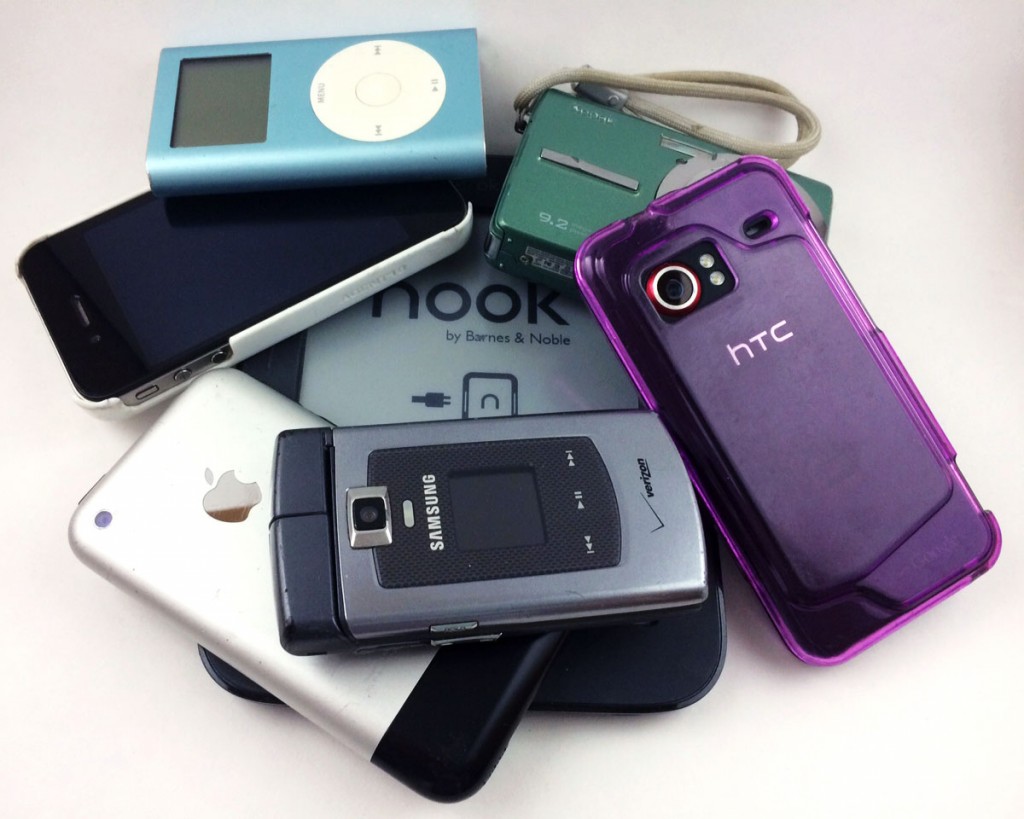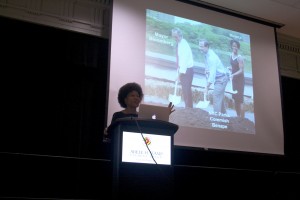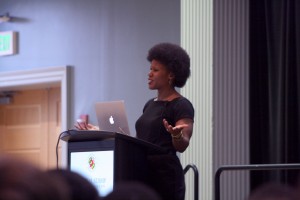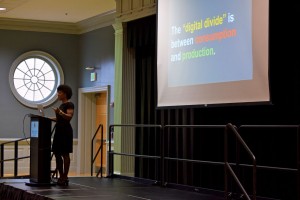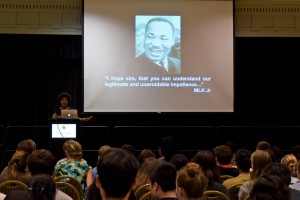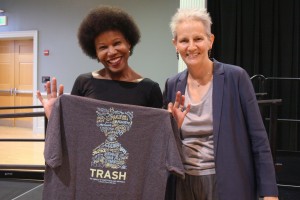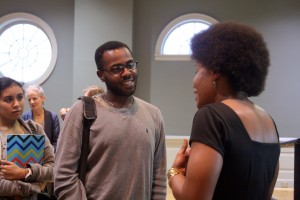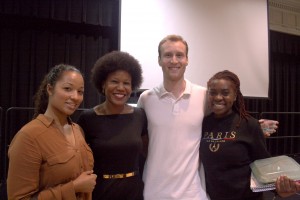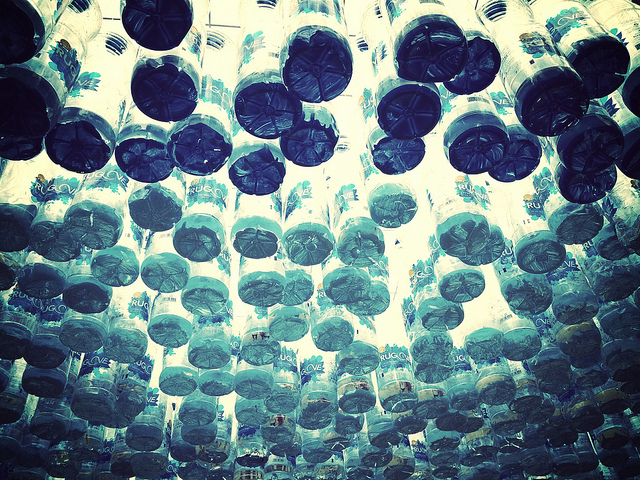
Kate Richard, sustainability associate in the Office of Sustainability and in Dining Services, takes us on a journey through the waste stream and shares some insight about the phrase “reduce, reuse, recycle.” Kate works on a range of campus sustainability programs. She graduated from the University of Maryland in 2013 with degrees in environmental science and policy and English.
You’ve just finished your lunch at Stamp. The three bins can be confusing, but you’ve mastered tri-sorting. Drink bottle in the recycling; napkin, plate, and food waste in the compost – all that goes into the trash is your fork. It looks like it’s almost a zero waste meal, but the waste that we see represents only a tiny fraction of the waste generated when any product is made. One garbage can-worth of waste you generate in your home generates 70 garbage cans upstream.[1]
Upstream waste is all of the waste related to extracting materials, producing or manufacturing the product, and transporting the product. The waste that we see – packaging, recyclables, etc. – is downstream waste. To stick with the upstream and downstream language, imagine a river that flows down the side of a mountain. At the top of the mountain is a factory that dumps polluted water into the river. Those substances float down the river, all the way to the bottom of the mountain. At the base of the mountain, a community works to eliminate the pollution in their stretch of river. This work is important, and it improves the environment in that community. But the larger pollution problem still remains, and the rest of the river continues to be polluted.

